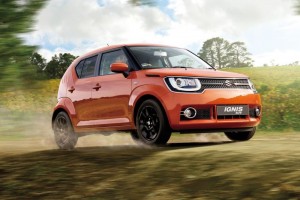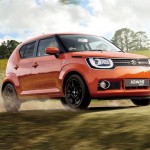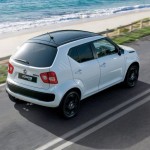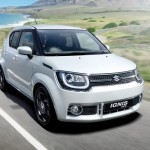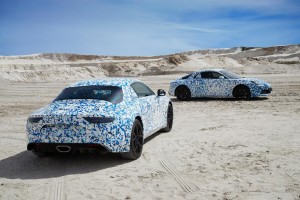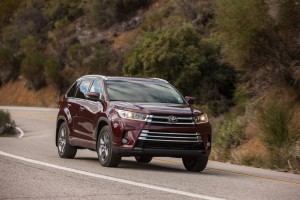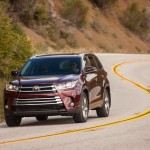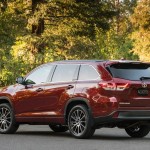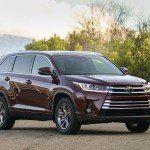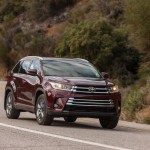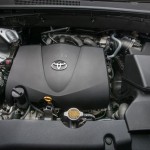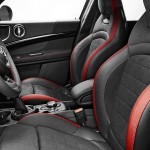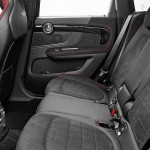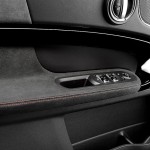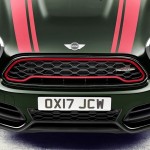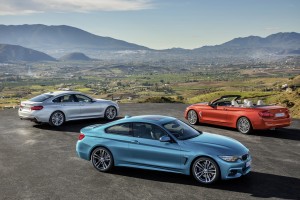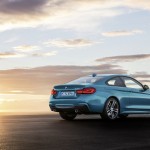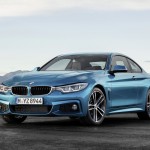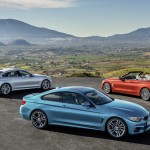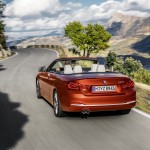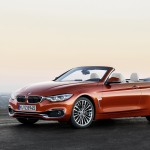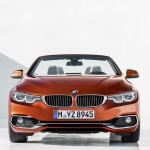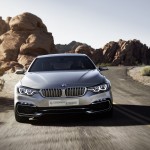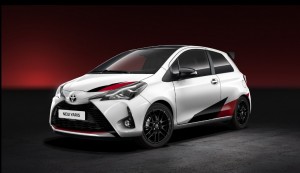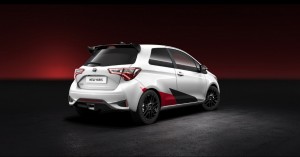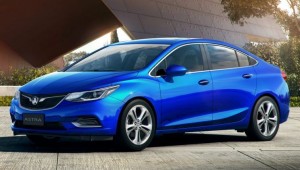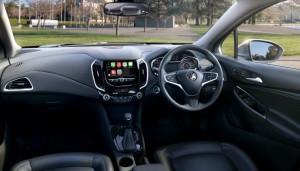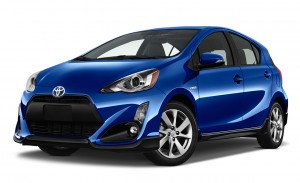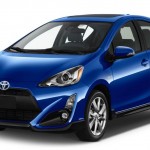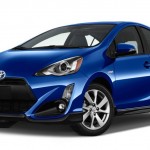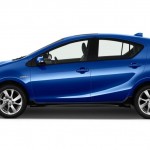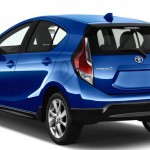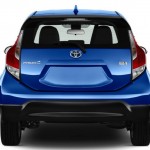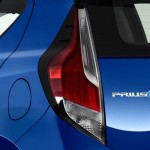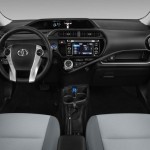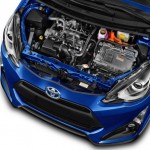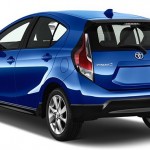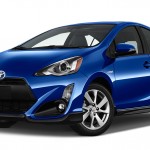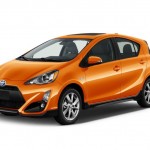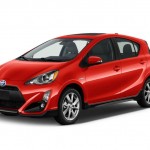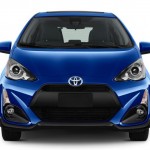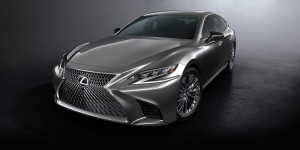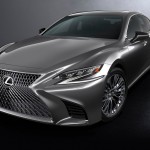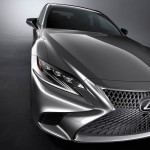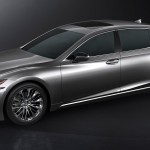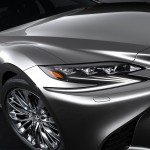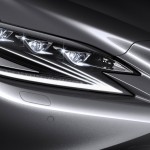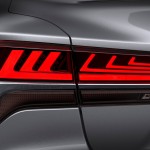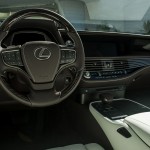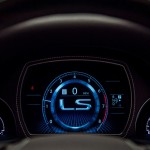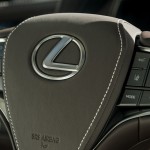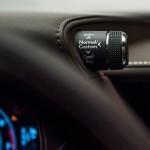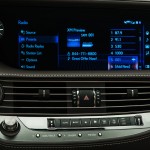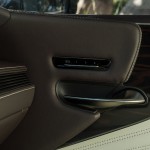Monthly Archives: January 2017
5 Elements To Love About The 2017 Suzuki Ignis
It is not easy to stand out in the compact car segment, but it looks like the 2017 Suzuki Ignis is doing just that. Reviving what it calls the “light SUV,” Suzuki combines the charm and functionality of a truly compact SUV with the customization option you thought you’ll only find in the expensive Mini.
Here are the key features of the auto:
1. Customizable
One of the unique things about the Ignis is that it’s completely customizable. Just like the Vitara, you can choose what style you want your Ignis to have. Here are some options: grille, fog light bezels, and alloy wheels in white, orange, or blue; and mirror caps in white, orange, blue, red or black.
That’s only for the exterior. Inside, there’s another personalization kit you can choose. It’s a kind of a mix-and-match style we can only find in the Mini, though the Ignis offers this at a way lower price bracket. It also has a faster delivery since every customizable element has been dealer-fitted.
2. Spacious Enough
The space inside is generous for its width. There is plenty of headroom because of the tall roof, but front-row passengers will be more intimately seated close than in the regular-sized SUVs.
3. Affordable
The Ignis has a base model price of just $15,990, which is way, way below the average price we usually spend on compact cars and SUVs.
4. Simple
There are only two models to choose from—the entry-level GL with the option for a five-speed manual transmission or CVT automatic or the upscale GLX with the CVT automatic.
The GL has the following features: standard fabric seat trim, cruise control with speed limiter, leather-wrapped steering wheel, halogen headlights and fog lights, and 15-inch steel wheels with full wheel covers.
The GLX, on the other hand, packs these: keyless entry and start, electronic climate control, LED headlights, privacy glass, a height-adjustable driver’s seat, and 16-inch alloy wheels.
5. Decent Power
In terms of power, there is not much there, actually. The GL and GLX are both powered by a 1.2-liter four-cylinder petrol engine that produces 66kW and 120Nm of torque.
4 Things You’ll Want To Know About The 2017 Renault Alpine
The Renault Alpine won’t be coming to US shores. It will be strictly for the European market only, though how far into Europe, we still don’t know, too. If you will remember, in 2012, Alpine and Caterham partnered to develop a platform that can be used for future Renault Alpine and Caterham sports car.
While Caterham dropped the plans, Renault pushed through with it. The 2017 Renault Alpine is possibly the prototype for the sports car that’s about to come.
1. Identical To Alpine Vision And Celebration Concepts
Renault unveiled in the past couple of years two concepts—the Alpine Vision and the Celebration. The spy shots confirmed that the prototype looks very similar to these two concepts. The similarities can be seen on the lines on the hood, the headlight arrangement, and the tri-panels on the side windows.
This prototype is clearly reminiscent of the Alpine.
2. Might Be Called A120 Or AS1
There is still no confirmation, but there are rumors within the auto industry that the sports car will keep with the tradition and will call itself the A120 or the AS1. The A120 is a “throwback” to the Alpine A110 Berlinette that came out between 1961 and 1977.
3. Competition Is The Alfa Romeo 4C And Porsche 718 Cayman
What’s a sports car without competition? Renault’s Alpine sports car will have heavy competitions against the Alfa Romeo 4C and the Porsche 718 Cayman. It is likely that it will have a rear-wheel drive that is paired with a turbocharged inline-4. It should be able to produce 270 horsepower that will allow it to go 0-60mph in under five seconds.
4. Production Will Be In France
Unfortunately, not only is the production going to be in France alone, this won’t also be shipped to the US. Renault’s Dieppe plant in the north of France was recently retooled to be able to handle the assembly of the chassis and body of the Alpine sports car.
5 New Features Of The 2017 Toyota Kluger
The Toyota Kluger has been updated for the 2017 model year. Set to arrive in Australia this February, the Japanese automaker fitted the Kluger with more style, a new set of standard features, and a boost in power and fuel efficiency.
All of these can make the Kluger one of the better bets in its segment.
1. Powertrain
The engine will remain the same: a 3.5-liter petrol V-6, though Toyota now added a direct injection for the engine and a new eight-speed automatic transmission. Owners will also get to choose between a front-wheel or an all-wheel drive. Similar to before, the Kluger is available in three model grades: the GX, the GXL, and the Grande.
The direct injection will pump up the power to 218kW and 350Nm from the previous 201kW and 337Nm. Fuel consumption is better at 9.1L/100km for the two-wheel drive GX up to 9.5L/100km for the all-wheel drive Grande.
2. Interior
The Kluger will enjoy enhanced interior features, thanks to premium materials and metallic touches. On top of that, the Grande, the top of the line, will be receiving a blue LED ambient lighting.
GXL owners will get a new 8.0-inch touchscreen audio system with navigation, DAB+ digital radio and power, and a power tailgate with an independent-opening glass hatch.
3. Safety Features
The good thing about this refresh is that the new safety features come standard to all Kluger variants. That means the three model levels will receive the following: seven airbags, reverse parking sensors, rear view camera, electronic traction and stability control, and ABS brakes with brake assist and electronic brakeforce distribution.
The Grande will have an additional—rear cross traffic alert, lane departure warning with steering assistance and sway warning.
4. Exterior
On the outside, you will notice some new designs on the grille and the new alloy wheel that comes in 18 inches for the GX and GXL, and 19 inches for the Grande.
5. Pricing
Pricing will be revealed during the model’s launch next month, though we’re seeing a $40,000 price tag here.
3 Things To Know About The Mini John Cooper Works Countryman
Mini’s largest vehicle is going to get the John Cooper Works treatment, which means an additional power than what Mini packed it with. The next-generation Mini Countryman will become the next model to receive such treatment.
Redesigned and unveiled in October, the Countryman is the largest vehicle in Mini’s lineup, meaning it will carry the burden of helping Mini get out from the slump in its American sales. According to a report, the 11-percent drop in 2016 is the brand’s worst performance since 2010. Experts point out to Americans’ preference for crossovers rather than sedans.
1. Countryman Is Now Considered A Crossover
Previously, the Countryman was considered a subcompact. But thanks to the upgrade, it is now under the category of a compact crossover and will be the direct competitors of the BMW X1 and the Subaru Forester.
It used a new front-wheel-drive platform shared with BMW. It’s also eight inches longer in length than its predecessor.
2. Countryman Is Faster And More Powerful
The 2018 John Cooper Works Countryman ALL4 can produce 228 horsepower and 258 pounds-feet of torque. Such power can bring the Countryman to hit 60mph in just 6.2 seconds, a 0.8-second better time than what the Mini Cooper S Countryman ALL4 can achieve.
The John Cooper Works variant is coming standard with an all-wheel drive system, and is sporting a suspension with the Brembo sports brake system and 18-inch alloy wheels.
3. Countryman Will Start Deliveries Soon
The John Cooper Works Countryman will be arriving in US dealerships in April 2017, which means you can begin your orders in a couple of months. Pricing has not yet been announced, but we’re hoping it won’t be too disastrous to our bank accounts, so we can somehow dream of having a Mini.
The John Cooper Works is available as a treatment for the Cooper hardtop two-door, the Cooper Clubman, and the Cooper convertible models.
5 Things To Watch Out For In The New 2018 BMW 4-Series
It’s that time of the year again when BMW gives its range of luxury vehicles a little refresh and update. This time, it’s for the 4-Series, which included the 4-Series, the 4-Series convertible, the 4-Series Gran Coupe, and the high-performance M4 and M4 convertible.
The changes will be introduced for the upcoming 4-Series to be released next year. Don’t expect the changes to be drastic, though, because they are nothing but cosmetic updates. These changes follow the same path trudged on by the 3-Series.
1. Exterior
From the outside, the changes are quote noticeable, especially if you are looking at those new LED headlights and foglights. There’s also the revised bumpers that give more credence to new available colors such as Snapper Rocks Blue and Sunset Orange.
2. Interior
Inside, the changes will depend on the trim you will purchase. The updates, we’re sure, are minimal, though the higher-end trim models may receive a bulk of the upgrades. On the instrument panel, you’ll find double stitching, which appears to be standard across the range. The infotainment system’s menu has also been revised.
3. Powertrain
There is no confirmation yet about the powertrains that will be made available in the United States. Don’t expect any major change, though, because BMW has just added new engines to the 4-Series for the 2017 model-year.
This means we can expect to see a turbocharged 2.0-liter inline-4 in the base 430i. This can produce 248 horsepower. Next on the line is the turbocharged 3,0-liter inline-6 that can produce 320 horsepower. The option falls between a six-speed manual or an eight-speed automatic transmission. You may also choose between an all-wheel or a four-wheel drive.
4. Rivals
In terms of competition, the luxury M4 will go head-to-head with the Cadillac ATS-V Coupe and the Mercedes-AMG C63 Coupe.
5. Pricing
There are no details about the pricing yet, but speculations suggest that the 4-Series could go up as high as $43,145.
3 Things To Look Out For In The 2018 Toyota Yaris
There are few vehicles in the history of automobiles that has a race car tag and Toyota’s logo on it. It just doesn’t happen that way. Instead, the Japanese automaker is known for efficiency, affordability, and reliability.
Recently, Toyota announced that a new Toyota Yaris is on the works, and that it will be revealed at the 2017 Geneva Motor Show in March. That’s pretty exciting for those who cannot wait to get their hands on a new hatchback from the Japanese automaker.
Here’s what we know about the car so far based on a source:
1. Exterior And Interior
According to hints and sources from Toyota, the new Toyota Yaris will gain a new front and rear styling (possible a new bumper or fascia). There will also be a modernized interior with a host of upgraded technologies to improve the handling and driving capability. Comfort and handling are two things that Toyota never compromise on.
2. Power
The 2018 Toyota Yaris will be more powerful at its full capacity of 210 horsepower. That’s faster than most sedans in the market today. That’s also pretty impressive, considering that the Yaris is only a hatchback and could not haul anything at all.
The range-topping Yaris will loosely be based on the three-door version. The 201 horsepower is not bad at all. Right now, the most powerful Yaris can produce 106 horsepower and 103 pound-feet, thanks to the 1.5-liter four-cylinder engine.
3. Handling
Aside from the horsepower it can produce, there’s not much we know about the 2018 Toyota Yaris. The Japanese car maker has yet to release specifications of the new engine, or whether there will be a new upgrade.
What’s clear is that Toyota wants the new Yaris to have a sportier appearance and performance. To do that, Toyota must add a bespoke, quick-shifting transmission. We also expect the Yaris to come out with a more muscular chassis that can deliver a sportier driving experience.
Top 5 Features Of The 2017 Holden Astra Sedan You Have To Know About
The 2017 Holden Astra sedan is the same Chevrolet Cruze that has been tested in the US. Only this time around, it’s wearing the Holden badge and carrying the Astra nameplate for the Australian market.
Here are the top 5 features of the car according to a report:
1. Powertrain
The biggest change happened under the hood. Instead of the Cruze’s 1.8-liter naturally-aspirated four-cylinder engine and 1.6-liter turbo petrol, the Holden Astra sedan will be powered by a 1.4-liter four-cylinder turbocharged petrol engine. Like the four-pot found on the Astra hatch, this can produce 114kW and 240Nm of torque.
2. Weight
The Astra is 113kg less in weight than the current Cruze. This allows an engine, which is basically not as powerful as other sedan’s, to pull the Astra significantly well. The Astra may be lacking a turbo engine, but the 1.4-liter makes good its promise to carry the Astra along. In terms of overall handling, the US-specification Cruze impressed drivers who tested it in Australia. After all, roads in Australia tend to be rougher than the ones in US soil.
3. Suspension
One of the biggest differences between the Cruze hatch and the Astra sedan is the setup of its suspension system. The hatch has a multi-link rear end while the sedan has a simpler torso beam or watts linkage hardware (depending on the models). That being said, the sedan may find it a bit difficult to compete with the hatch in terms of handling and driving experience.
4. Interior
An area of improvement for the sedan, though, is the cabin. It noticeable has an improved design and presentation, thanks to the MyLink infotainment system. The console between the front seats is larger and could therefore, store more, because of the elimination of a hand brake. However, this has been replaced by a foot brake, which is honestly worse than a hand brake considering the presence of electric park brakes these days.
5. Pricing
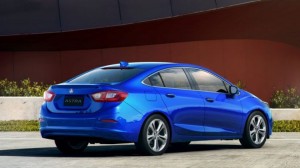
Holden has not released the official pricing yet, though the Astra is widely believed to start around the range of $21,000.
3 Things We Noticed About The Subpar 2017 Toyota Prius C
Whatever changes Toyota has been bragging about the 2017 Toyota Prius C cannot change the fact that it’s a subpar gas-electric vehicle. The same powertrain will produce the same speed and reaction time, and that was the major contention on the previous generation of the Prius C.
And although it is priced much lower than its competition—Chevrolet Volt ($34,095 – $38,445), Toyota Prius Prime ($27,965 – $33,965), and Toyota Prius ($25,550 – $30,880)—the changes on the 2017 Prius C remains to be too minimal.
1. Safety Features
In the previous generation, safety features are an option. That changed with the 2017 Prius C line because safety equipment is now packed as standard features on the vehicles. Named the Toyota Safety Sense-C moniker, the standard safety items are: forward-collision warning with automated emergency braking, lane-departure warning, and automatic high-beam headlights.
2. Powertrain
As mentioned above, the powertrain will remain the same 1.5-liter four-cylinder engine with a two AC motor/generators. Combined together, they can produce a paltry 99 horsepower that enables the Prius C to go 0 to 60mph in a lengthy 10.9 seconds.
The larger generator is provides the propulsion that generates electricity during deceleration while the smaller AC unit power the wheels with electric-controlled drive ratios (electronic CVT).
3. EPA Ratings
If you’re looking for better EPA ratings for the Prius C, sad to say that’s not going to happen. Compared with the 2016 EPA ratings, the 2017 Prius C dropped by 5 mpg around town and 3 mpg on the freeway. It now has a 48 mpg city and 43 mpg highway ratings.
The truth is, this might not be about the mechanical differences in the two generations. EPA now has a tougher fuel-economy testing guidelines. Compared with the regular Prius with 54 mpg city and 50 mpg highway, the Prius C’s EPA ratings are clearly lacking.
Photos
Check out some of the official photos of the 2017 Toyota Prius C in the gallery below:
3 Things Worth Pointing Out About The Avatar Roadster
Avatar is a British sports car startup that has just introduced its very first production car—the Avatar Roadster. The sports car packs a Ford EcoBoost engine and its spaceframe chassis. Not bad for a first car, though it’s a little steep on the prices.
According to a report, this particular model will make its live appearance at the 2017 Performance Car Show in Birmingham, UK. It’s interesting how the production came about when Avatar just introduced its prototype last year. That was some pretty fast engineering.
1. Ford EcoBoost Engine Is The Base Model
Possibly the base model, the initial stage of the Avatar Roadster packs the 2.0 turbocharged Ford EcoBoost engine that packs 250 horsepower (186 kilowatts), which we now see is similar to the Ford ST credits. It has a dry weight of just 695 kilograms (1,532 pounds), allowing the Roadster to go 0-60mph in four seconds. The maximum speed is 145mph.
2. Focus RS Has More Power
If you are looking for a stronger engine, you may want to look at the Focus RS-based model that has a 2.30liter turbocharged that can go 0-60mph in just 3.6 seconds. This is paired with a six-speed manual transmission or the optional seven-speed paddle-shift sequential racing gearbox.
3. Interior Is Packed To The Brim
The lightweightedness of the vehicle makes us think that it will simply pack the standard interior features, but we are wrong. The Avatar Roadster has a techy and modern interior that is also comfortable, thanks to the full-leather interior, heater, and air conditioning.
As for the tech stuff, it comes with the Apple CarPlay and the Android Auto in standard trim. If you want the roof, you will have to pay extra for that. Avatar also boasts of a full suite of “pure track experience.” The package includes fire extinguisher, data logger, and GoPro HD camera compatibility.
The Avatar Roadster will be sold for £39,990 ($48,603).
Top 3 Facts About The 2018 Lexus LS
For many years, Lexus LS, which debuted in 1989 at the Detroit Auto Show, has been the standard of many stylish sedans. Lexus is looking to recapture some of that former glory during this year’s North American International Auto Show.
To do that, Lexus has to make this fifth-generation LS larger, more powerful, and more stylish than ever based on a report.
1. Size And Design
The new architecture used by Lexus makes the LS lower, wider, and is closer to the ground center of gravity. The front end reminds us of the LC Coupe but the side profile is far different from the current generation LS. It comes with Lexus’ new six-side window design and 20-inch wheels with a special hollow rim structure which can reduce the vehicle noise.
Why is this important for Lexus? The exhaust will certainly be noisier than this model’s predecessor even if the sedan is fitted with an active noise cancellation system in the cabin.
2. Powertrain
During the auto show, the Japanese automaker only showed the specs of the LS500 model. It comes packed with a twin-turbocharged direct-injected 3.5-liter V-6 engine that can produce 415 horsepower and 442 lb-ft of torque.
The power allows the LS to compete well with its counterparts from other luxury car makers: the Mercedes-Benz S550 that cranks out 449 horsepower and the BMW 750i that produces 445 horsepower.
The engine is paired with Aisin-supplied 10-speed automatic transmission with rear-wheel drive as standard and all-wheel drive as optional. According to Lexus, the car can go 0-60mph in just a matter of 4.5 seconds.
3. Interior
Luxury is the name of the game in the LS’ cabin. It’s covered with plush, buttery-smooth leather and beautifully designed dashboard. Owners can choose different types of wood trim and ambient lighting that is based on Japanese lanterns.
It also comes with Lexus’ remote touch interface that controls the 12.3-inch central display screen. It has smartphone-like operations.

